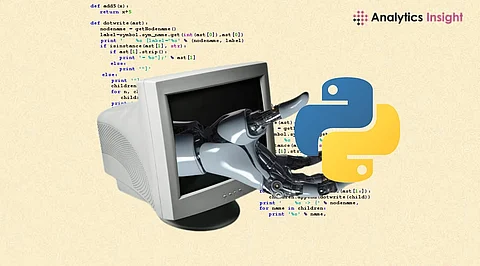

Data science is a multidisciplinary field that involves extracting insights from data using various methods and tools. Python is a popular programming language for data science, as it offers a rich set of libraries and frameworks for data analysis, visualization, and machine learning. Here are some of the top 10 data science projects in Python with details:
The goal of this data science project is to create a music recommendation system utilizing the KKBox dataset, which comprises data on the songs, artists, users, and listening habits of the biggest streaming platform in Asia. The goal of the project is to forecast the probability that a user would listen to music frequently using machine learning models, feature engineering, and data research.
The objective of this research is to use the Abalone dataset, which includes physical measures of the shells including length, diameter, height, weight, and rings, to assess the age of abalone shells. Regression models, descriptive statistics, and data visualization are used in this study to determine the age of the shells based on their rings.
The purpose of this data science project is to investigate, evaluate, and present the events from the English Premier League, the highest division of the English football league system, in 2018–2019. Using the Soccer Data dataset which offers comprehensive details on the games, teams, players, and events the project entails data processing, aggregation, and charting.
The goal of this project is to use the Stock Market dataset, which includes daily prices and volume information for a variety of equities from 2010 to 2017, to do a thorough analysis of the stock market. The project includes time series analysis, correlation analysis, clustering analysis, and data cleansing, transformation, and visualization.
Building a recommendation system for Netflix, the top streaming service in the world, is the goal of this project. Using the Netflix Prize dataset, which comprises user ratings for over 17,000 films from over 480,000 people, the research entails data pretreatment, exploratory data analysis, and collaborative filtering.
The goal of this research is to use the House Rent dataset, which includes details on over 21,000 houses' locations, sizes, amenities, and rent, to forecast the rent of houses in various cities. Data cleansing, feature engineering, and machine learning models like random forests, decision trees, and linear regression are all part of the project.
This project uses machine learning methods, including categorization and natural language processing, to create a password-strength tester. Employing the Password Strength dataset which comprises more than 6,000 passwords and their strength labels the project entails data collection, preprocessing, vectorization, and model training, assessment, and deployment.
The goal of this research is to assess how well various categorization models perform using a range of measures, including roc curve, accuracy, precision, recall, f1-score, and confusion matrix. Using the Breast Cancer dataset, which comprises the characteristics and diagnoses of 569 individuals, the project entails data loading, splitting, and scaling in addition to model construction, testing, and comparison.
To identify fraudulent credit card transactions, this project makes use of machine learning models including k-nearest neighbors, logistic regression, and support vector machines. Using the Credit Card Fraud Detection dataset which comprises the transactions and labels of over 280,000 credit cards the project entails data exploration, feature selection, and resampling in addition to model training, validation, and tuning.
The goal of this project is to use natural language processing techniques, such as text preprocessing, word embedding, and deep learning, to predict if two Quora questions imply the same thing. In addition to creating, training, and evaluating a model utilizing the Quora Question Pairs dataset which has over 400,000 question pairs and their corresponding similarity labels the project also entails loading, cleaning, and separating data.
Join our WhatsApp Channel to get the latest news, exclusives and videos on WhatsApp
_____________
Disclaimer: Analytics Insight does not provide financial advice or guidance on cryptocurrencies and stocks. Also note that the cryptocurrencies mentioned/listed on the website could potentially be scams, i.e. designed to induce you to invest financial resources that may be lost forever and not be recoverable once investments are made. This article is provided for informational purposes and does not constitute investment advice. You are responsible for conducting your own research (DYOR) before making any investments. Read more about the financial risks involved here.
